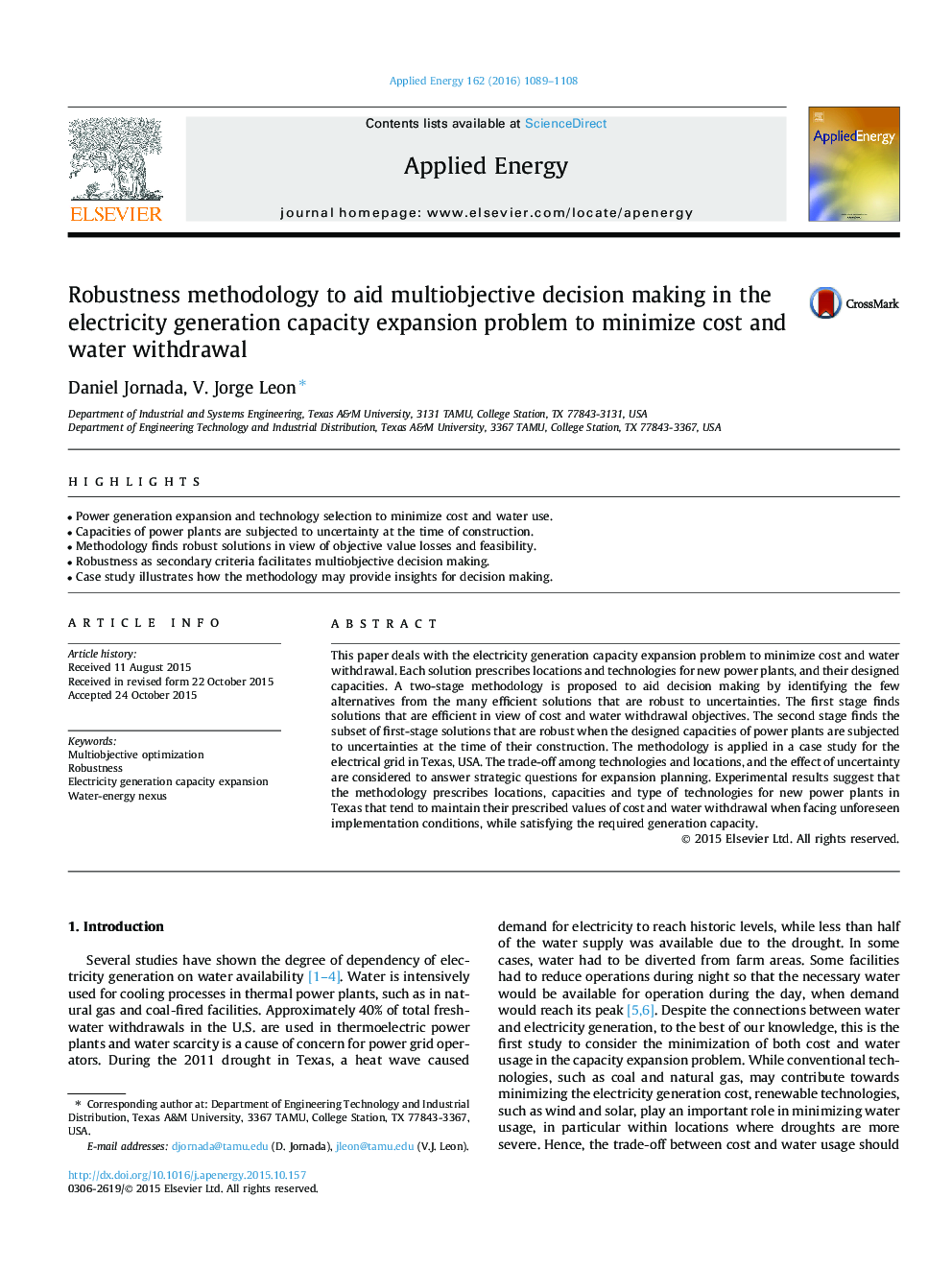| Article ID | Journal | Published Year | Pages | File Type |
|---|---|---|---|---|
| 6684905 | Applied Energy | 2016 | 20 Pages |
Abstract
This paper deals with the electricity generation capacity expansion problem to minimize cost and water withdrawal. Each solution prescribes locations and technologies for new power plants, and their designed capacities. A two-stage methodology is proposed to aid decision making by identifying the few alternatives from the many efficient solutions that are robust to uncertainties. The first stage finds solutions that are efficient in view of cost and water withdrawal objectives. The second stage finds the subset of first-stage solutions that are robust when the designed capacities of power plants are subjected to uncertainties at the time of their construction. The methodology is applied in a case study for the electrical grid in Texas, USA. The trade-off among technologies and locations, and the effect of uncertainty are considered to answer strategic questions for expansion planning. Experimental results suggest that the methodology prescribes locations, capacities and type of technologies for new power plants in Texas that tend to maintain their prescribed values of cost and water withdrawal when facing unforeseen implementation conditions, while satisfying the required generation capacity.
Related Topics
Physical Sciences and Engineering
Energy
Energy Engineering and Power Technology
Authors
Daniel Jornada, V. Jorge Leon,
